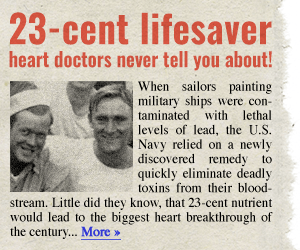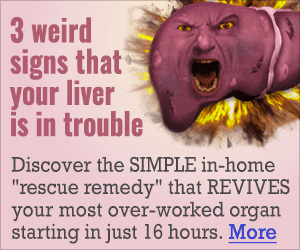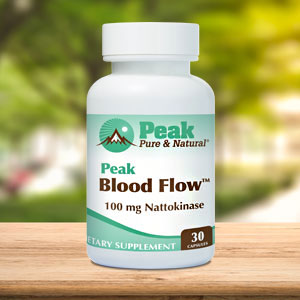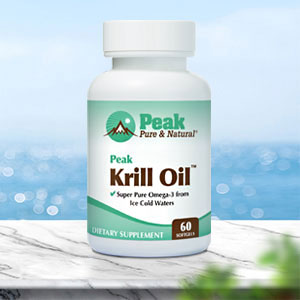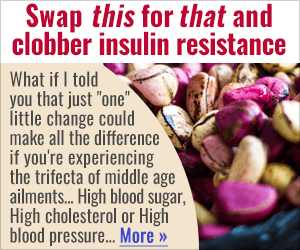Get Easy Health Digest™ in your inbox and don’t miss a thing when you subscribe today. Plus, get the free bonus report, Mother Nature’s Tips, Tricks and Remedies for Cholesterol, Blood Pressure & Blood Sugar as my way of saying welcome to the community!
High triglycerides linked to abdominal aortic aneurysm

The “wisdom” I was raised with (as many of you probably were) was that all fat is bad. But now we know better. There’s “good fat,” and then there’s “bad fat.”
“Good fat” is found in foods like olive oil and avocados (monounsaturated fats) as well as in fatty fish and walnuts (polyunsaturated fats). Eating these foods will actually help lower your risk of heart disease.
“Bad” fats, or triglycerides, are found in processed foods, fatty meats and fried foods.
The scientific community has considered having a high level of triglycerides to be a biomarker of risk for vascular disease and stroke.
But new research is sounding an alarm, finding that, in fact, high triglycerides play a direct role in causing a serious and potentially life-threatening condition…
High triglycerides promote abdominal aortic aneurysm
A University of Michigan study has shown that high levels of triglycerides play a direct and pathogenic role in the development, growth, and rupture of abdominal aortic aneurysms (AAAs).
An AAA is a bulge in the part of the aorta that travels through the abdomen. The bulge forms in an area where the aorta’s wall has grown weak, putting it at risk of bursting under the constant pressure of blood flow.
Signs of an AAA include abdominal pain, back pain, groin pain, and a pulsating feeling in the abdomen. If the aneurysm ruptures, massive bleeding can cause death within minutes.
The research at Michigan Medicine using three different mouse models demonstrated a triglyceride dose-dependent effect on AAA severity:
- Moderate elevations in triglycerides accelerated aneurysm formation, while higher levels led to aortic dissection.
- Mice with severely elevated triglyceride concentrations developed more severe complications consistent with aortic rupture.
The investigation also revealed that elevated triglycerides and related fatty acids, particularly palmitate, impaired the maturation and activity of lysyl oxidase. This critical enzyme maintains the structure and integrity of the aortic wall. The dysfunction caused by palmitate helped to weaken connective tissue and promote aneurysm progression.
Palmitate is the most common saturated fatty acid, found in both animals and plants, and is abundant in foods such as meat, milk, cheese, and particularly palm oil. It has some beneficial roles in cellular processes but is known to contribute to inflammation and insulin resistance.
Palm oil is a cheap substitute for butter or other refined vegetable oils, making it especially common in pastry dough and baked goods. These, along with other ultra-processed foods, have already been identified as drivers of disease.
Lowering triglycerides could save your life
Abdominal aortic aneurysms are more common in men and among people age 65 and older — and are usually caused by atherosclerosis.
And if you haven’t guessed, high triglycerides are linked to the increased risk for atherosclerosis — or hardening of the arteries.
Of course, we know the best way to keep your arteries clear is to eat healthily. Start with avoiding ultraprocessed foods, like:
- Sweets and baked goods
- Refined grains
- Fried foods
- Unhealthy oils, including palm oil
- Fatty and processed meats, including bacon and sausage
- High-fat dairy
- Processed snacks like chips and crackers
- Alcohol
Instead, reach for:
- Leafy greens like kale and cruciferous veggies (broccoli and cauliflower)
- Black beans
- Fresh fruit on pancakes instead of syrup
- White meat chicken and fish, like salmon and cod
- Oils like olive oil, flaxseed oil and fish oil (canola oil can be a healthy substitution as well)
- Avocados, berries, citrus, apples, bananas and kiwi contain fiber and antioxidants that help lower triglycerides (avoid fruit juices high in sugar)
For more tips, see what cardiologist Dr. Elizabeth Klodas recommends for lowering triglycerides and how to know when high triglyceride levels are genetically driven.
Editor’s note: What do you really know about stroke? The truth is, only 10% of stroke survivors recover almost completely, and all doctors can offer is what to do after a stroke occurs. That’s unacceptable considering 80% of strokes are preventable! Click here to discover how to escape The Stroke Syndrome: 5 Signs it’s Stalking You — Plus the Hidden Causes and Preventive Measures You’ve Never Heard About!
Sources:
High triglycerides drive life-threatening aortic aneurysms, study in mice finds — Eureka Alert
Lifestyle changes to reduce triglycerides — National Lipid Association



